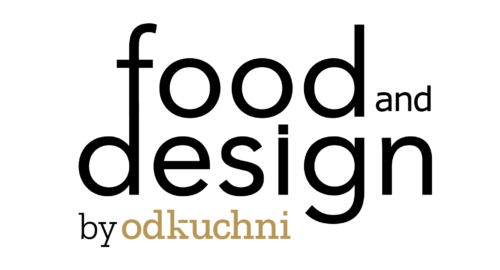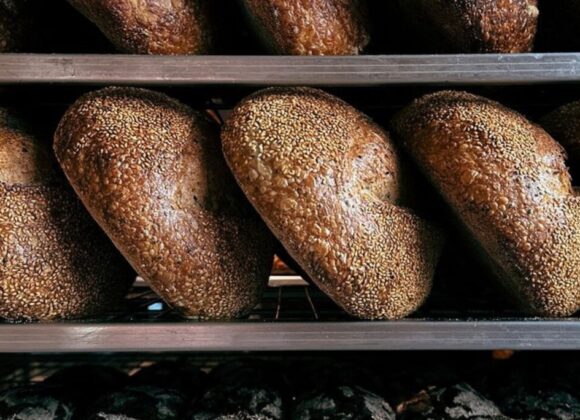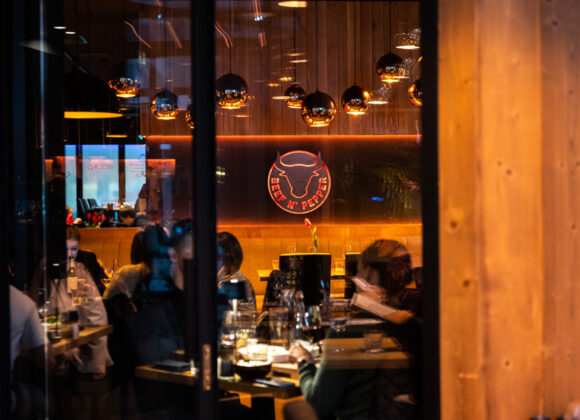Wiesz, że każdego dnia do Twoich klientów dociera pięć razy więcej informacji niż w 1986 roku? Innymi słowy: jest to sto siedemdziesiąt pięć gazet, które przeczytaliby każdego dnia od A do Z. Sporo, prawda? Między innymi to sprawia, że nasze mózgi są przeciążone i przebodźcowane. Efektem tego jest contentowy fast food, czyli szybkie treści, które sprawiają, że mamy wyrzut dopaminy.
Możesz pomyśleć: „Ale co ma wspólnego dopamina z treściami, które publikuję?”. Bardzo dużo. Dopamina jest hormonem, który odpowiada za uczucie szczęścia. Wydziela się przede wszystkim, gdy czekamy na nagrodę, przyjemność. Można ją wywołać smacznym jedzeniem, rozwiązaniem trudnego zadania, albo… dobrze zaprojektowanym tekstem! Jak to zrobić? Poznaj trzy tricki, które sprawią, że klienci będą czytać Twój tekst z rumieńcami na twarzach.
Przyciągnij jak magnes tytułem
Aby odbiorcy w ogóle chcieli zapoznać się z tym, co masz do powiedzenia, musisz złapać ich uwagę. Nie jest to proste, ponieważ każda sekunda to 11 milionów informacji, które są odbierane przez nasze zmysły. Nie załamuj rąk! Są pewne magnesy, które działają na naszą uwagę jak lep na muchy. Jeśli ich użyjesz, masz większą szansę, by przebić się ze swoim tekstem do uwagi odbiorcy.
Możemy wyróżnić 4 główne chwytacze uwagi. Użyj ich w tytule (ale też np. grafikach lub podtytułach) i skuś swoich klientów do skosztowania tego, co dla nich przygotowałeś.
Komunikat osobisty
Ten rodzaj tytułu zwraca się bezpośrednio do odbiorcy oraz jego potrzeb. Przykład: Wolisz lemoniadę truskawkową czy cytrusową? Sprawdź nasze przepisy!
Niedokończenie
Są to tak zwane cliffhangery. Mamy początek, ale… nie mamy końca! Często stosowany zabieg przez twórców seriali. Ty również możesz wykorzystać ten trick w swoich tekstach. Przykład: Kiedyś mała restauracja, dziś najmodniejsze miejsce! Poznaj…
Tajemnica
Tajemnice, konspiracje to jest coś, czym człowiek żył prawie od zawsze. Zmieniały bieg historii, a teraz sprawiają, że koniecznie musimy przeczytać tekst, aby poznać odpowiedź. Przykład: Tajemniczy przepis Gordona Ramsaya. Zanim go stworzył, wypróbował te receptury.
Zagadka
Jest to kolejny przykład chwytacza, który dodatkowo wyzwala wyrzut dopaminy do mózgu. Koniecznie chcemy się dowiedzieć, jakie jest rozwiązanie! Więc klikamy w tytuł i sprawdzamy, jaka jest odpowiedź. Przykład: 3 na 5 profesjonalnych kucharzy nie potrafi tego zrobić. Podchwytliwy przepis kuchni śródziemnomorskiej.
Na jaką potrzebę odpowiadasz?
Twój klient czytając przygotowane przez Ciebie teksty, chce mieć z tego jakąś korzyść. Przychodzi do Ciebie z jakąś potrzebą i oczekuje, że na nią odpowiesz. Tak jesteśmy skonstruowani, że zazwyczaj robimy coś po coś – nie inaczej jest z odbiorem content marketingu. D.E. Whitman o tym wiedział i stworzył spis korzyści, które ułatwią Ci zadanie. Podzielone są one na dwie części: korzyści podstawowe oraz korzyści drugiego rzędu.
Korzyści podstawowe
Są to najbardziej skuteczne potrzeby, które możesz wykorzystać w swoich tekstach. Należą do nich:
- radość z życia, przedłużenie życia;
- radość z jedzenia i napojów;
- wolność od strachu, bólu i niebezpieczeństwa;
- towarzystwo seksualne;
- komfortowe warunki życia;
- bycie lepszym, wygrywanie;
- opieka i ochrona bliskich;
- aprobata społeczna;
Korzyści drugiego rzędu
Równie skuteczne, ale nie są dla nas tak ważne, jak te podstawowe.
- Bycie poinformowanym;
- zaspokojenie ciekawości;
- czystość ciała i otoczenia;
- wydajność;
- wygoda;
- niezawodność/jakość;
- ekspresja piękna i stylu;
- ekonomia/zysk;
- okazje (rabaty, promocje, coś co daje zysk).
Jak wykorzystać tę listę w praktyce?
Przede wszystkim zastanów się, jaka cecha Twojej oferty/produktu/usługi ma być bohaterem tekstu. Na przykład: Chcesz poinformować, że wprowadziłeś do menu lemoniady, których smak można sporządzić samodzielnie. W kolejnym kroku wybierz potrzebę z listy Whitmana. W tym przypadku może to być radość z jedzenia i napojów. W ostatnim etapie połącz cechę z potrzebą. W Twoim przypadku mogłoby to być: Rozpocznij lato z orzeźwiającymi lemoniadami, których smak możesz skomponować samodzielnie lub razem z przyjaciółmi!
Zwalcz obawy raz a dobrze!
Każdy z nas ma jakieś obawy, tak zwane blokery, które odciągają nas od zakupu. Mogą one dotyczyć różnych spraw, na przykład ceny (jest zbyt wysoka), nieznajomości marki (np. nie znam tej firmy, więc nie wiem, czego się spodziewać) albo odległości (za daleko, wybiorę coś bliżej). Ilu klientów, tyle obaw! Zadaniem Twoich tekstów jest zbicie tych blokerów, a nawet przekucie ich w przewagę. Jak to zrobić?
W pierwszym korku spisz obawy, jakie mogą mieć klienci w związku z Twoją ofertą. Może to być faktycznie zbyt wysoka cena. W drugim kroku napisz odpowiedź na tę obawę. Przykład:
U was jest za drogo 🡪 Ceny w naszej restauracji nie są niskie. Mogłyby takie być, gdybyśmy produkty, z których tworzymy dla Ciebie dania, kupowali w popularnych dyskontach. Jednak zamawiamy je od lokalnych dostawców. Dzięki temu mamy pewność, że to, co Ci proponujemy, jest nie tylko smaczne, ale także wartościowe.
Stwórz tabelę z obawami i odpowiedziami na nie. Będzie to dla Ciebie ściąga, którą wykorzystasz, gdy będziesz pisać treści na stronę www lub na social media. Dzięki temu trickowi obalisz obawy klienta, nawet jeśli on jeszcze ich nie zna!
Już wiesz, że przebicie się do uwagi klienta nie jest prostym zadaniem. Jest to jednak misja jak najbardziej wykonalna. Tworząc teksty, pamiętaj, że na wstępne musisz złapać uwagę odbiorcy. Wykorzystaj do tego magnesy, np. zagadkę, tajemnicę, niedokończenie lub komunikat osobisty. Następnym krokiem jest danie jakieś wartości czytelnikowi. Zrobisz to, gdy odpowiesz na jego potrzebę. Pamiętaj, że każdy z nas oprócz potrzeb ma jakieś obawy przed zakupem. Zdefiniuj, jakie blokery mają Twoi klienci i przekuj je na swoje przewagi.










 Młodszy specjalista ds. komunikacji marketingowej i PR.
Młodszy specjalista ds. komunikacji marketingowej i PR.


 Absolwent Uniwersytetu Warszawskiego oraz Szkoły Głównej Gospodarstwa Wiejskiego. W branży HoReCa od ponad 10 lat. Przez lata związany z Grupą Trip, Sobienie Królewskie Golf and Country Club oraz restauracją Florentin w Warszawe.
Absolwent Uniwersytetu Warszawskiego oraz Szkoły Głównej Gospodarstwa Wiejskiego. W branży HoReCa od ponad 10 lat. Przez lata związany z Grupą Trip, Sobienie Królewskie Golf and Country Club oraz restauracją Florentin w Warszawe. Absolwentka Wydziału Architektury Politechniki Warszawskiej na kierunku Architecture for Society of Knowledge oraz Komunikacji Wizualnej na Politecnico di Milano. Specjalistka od budowania nastroju. Doświadczenie zdobywała w kraju i zagranicą podczas licznych warsztatów międzynarodowych (Sevilla, Lizbona, Florencja), stypendium na La Sapienza (Rzym) oraz pracując m.in. w Carmi e Ubertis i ADM Milano.
Absolwentka Wydziału Architektury Politechniki Warszawskiej na kierunku Architecture for Society of Knowledge oraz Komunikacji Wizualnej na Politecnico di Milano. Specjalistka od budowania nastroju. Doświadczenie zdobywała w kraju i zagranicą podczas licznych warsztatów międzynarodowych (Sevilla, Lizbona, Florencja), stypendium na La Sapienza (Rzym) oraz pracując m.in. w Carmi e Ubertis i ADM Milano.








 Menedżer z wieloletnim doświadczeniem w branżach kosmetycznej, spożywczej, dziecięcej. W trakcie swojej kariery związany z firmami takimi jak: L’Oreal, Samsung, Danone-Nutricia, Unilever. W ciągu swojego życia zawodowego odpowiadał między innymi za rozwój sprzedaży i contentu eCommerce w Polsce i krajach Europy Środkowo-Wschodniej.
Menedżer z wieloletnim doświadczeniem w branżach kosmetycznej, spożywczej, dziecięcej. W trakcie swojej kariery związany z firmami takimi jak: L’Oreal, Samsung, Danone-Nutricia, Unilever. W ciągu swojego życia zawodowego odpowiadał między innymi za rozwój sprzedaży i contentu eCommerce w Polsce i krajach Europy Środkowo-Wschodniej. 

























































